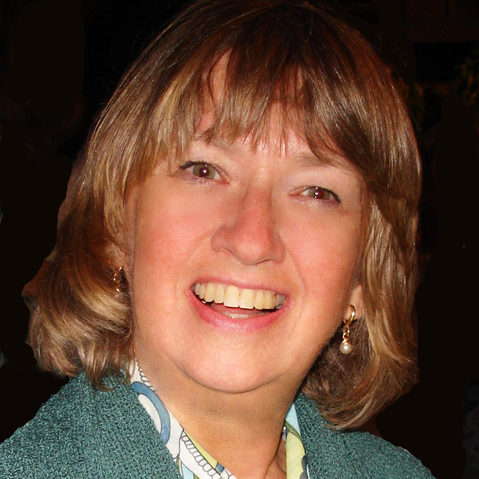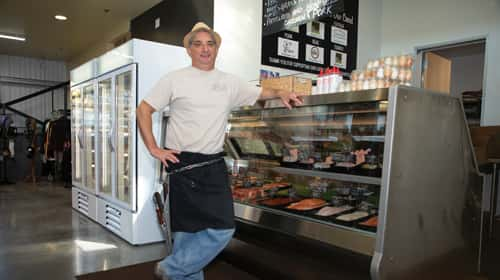When an atmospheric river began dumping rain on Sonoma County in late February, no one at The Barlow was too concerned. The City of Sebastopol received frequent updates on potential flooding from Sonoma County’s Emergency Operations Center, and city staff passed the information to the upscale shopping district and its management. Additionally, a city-approved disaster plan designed to protect the property was ready to implement—the expected deployment of water barriers at The Barlow reassured tenants the most. The plan went awry, however, and by the early hours of Wednesday, Feb. 27, it was clear a flood was in control.
Adam Parks, co-owner of Victorian Farmstead Meats with his wife, Laura, and a sub-tenant of Community Market, has lived in Sonoma County since the 1970s and experienced previous floods. He anticipated an inundation and began working with Melissa Minton, general manager of Community Market, to stop the water from entering the Depot Street building they share. He took a truck and trailer to H & M Landscape Materials to pick up 200 sandbags, but it didn’t make a difference. According to Parks, most of the water was coming from inside. Pumps designed to remove water weren’t operating, and material from the septic tank in the ground below was leaking into the building. While floodwater inside the market was only 6 to 8 inches deep, it was above the baseboards and wicked up the drywall, causing damage up to 18 feet high. Since that day, many of The Barlow’s tenants have reopened, while some have taken other action. And the property owner, along with the city, is intent of finding out why the disaster plan failed.

History
Barney Aldridge, owner of Aldridge Development, bought the 12.5-acre former industrial property that became The Barlow in 2006 with the intent to build housing. In 2007, however, when people became aware of his proposal, he faced opposition. “The citizens of Sebastopol came in droves to the public hearings and insisted it be denied,” he says. Then the recession struck, and the cluster of buildings remained vacant until 2010. That year, people started calling to ask if he had space for businesses. The city’s preference was for the former applesauce-canning facility to remain industrial, and so he started signing leases with retail businesses—a winery, a brewery, a bakery and a juice company among them. “The community kind of created itself,” he recalls. It grew to become a popular maker marketplace that was a destination for both local residents and visitors. “We had to tear down the biggest building,” Aldridge says. But his company built 11 new ones and renovated four others, eventually bringing the total number in the complex to 18 on four city blocks.
As part of the approval process for creating an indoor-outdoor market, the city required that The Barlow have a disaster plan that would allow it to withstand a flood; it’s adjacent to the flood plain, but not in it. “They had never had an actual flood event in The Barlow before,” says Larry McLaughlin, Sebastopol’s city manager and attorney. Nonetheless, a flood plan was required, and after several years developing it, Aldridge submitted one that included the use of flood log barriers—a modular system designed to keep out large quantities of water. The Barlow tested the plan in 2012 with 50 workers, and everything worked. But McLaughlin points out that the test didn’t include the adverse conditions that contributed to its failure. Most notably, the streets were flooded, so the large contingent of temporary workers needed—if they were available—couldn’t reach the site. Also, according to The Barlow: the water rose too fast and forklifts that were supposed to put the barriers in place couldn’t operate in the water; and after working through the night on the heavily flooded eastern half of The Barlow, many laborers left before deploying the flood logs on the higher, western half of the property.
In the event of a flood, the Sonoma County Emergency Operations Center provides the city with continuing information on water levels, based on the height of the Russian River at the Guerneville and Hacienda bridges. If the flood stage at Guerneville is 46.5 feet, for example, that’s how high the water is above a predetermined zero level. “You can extrapolate to find out what you’re supposed to do,” says McLaughlin, adding that building official Glenn Schainblatt helps with the calculations required. The data on rising water levels was meant to trigger certain actions that were outlined in The Barlow’s flood plan, and Schainblatt was giving The Barlow updates as soon as the city received them to assist management in determining what they should do.
Because the plan didn’t work, McLaughlin ordered a report to figure out what happened. “My main goal in commissioning the report was documenting what we did and finding out if things need to be tweaked or changed,” he says. He emphasizes he wants conversations to take place well in advance of the next flood season to avoid future problems. The city was unable to question tenants of The Barlow, because most have legal counsel, but he believes the flood can be a learning experience for everyone. “We have an obligation to those tenants and to The Barlow,” he says. “We want to make sure that whatever we can do, we do.”
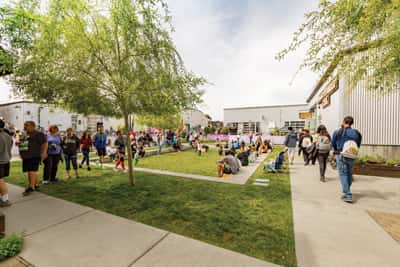 At the time of the flood and its immediate aftermath, the city’s primary concerns were humanitarian and the loss of sales tax revenue, so his main goal was to facilitate the reopening of businesses in the popular market as quickly as possible. As a result of his obligation, permits for occupants of The Barlow got top priority, and the city waived all permit and inspection fees.
At the time of the flood and its immediate aftermath, the city’s primary concerns were humanitarian and the loss of sales tax revenue, so his main goal was to facilitate the reopening of businesses in the popular market as quickly as possible. As a result of his obligation, permits for occupants of The Barlow got top priority, and the city waived all permit and inspection fees.
“I think that’s been pretty successful,” he says. Additionally, according to a July 10 letter provided by McLaughlin, the City of Sebastopol’s Building Department has asked to meet with Aldridge at The Barlow to put the original flood plan to the test. Aldridge agreed to the meeting, which is to take place in August. The city’s goal is to avoid another disaster by ensuring the current plan is ready before this winter. Only at that point will Sebastopol consider any revisions to the flood protection plan at The Barlow.
Moving forward
Of The Barlow’s 18 buildings, 13 were flooded, with 60 percent of the businesses sustaining varying degrees of damage, and cleanup began as soon as the water had receded. Parks reports that Aldridge and The Barlow management had a remediation team at work the next day at Community Market. They dismantled and repaired walls and inspected equipment for hygiene and cleanliness.
“The Barlow staff did a great job of having people here to do structural repairs,” says Parks. His shop, however, was unable to open until April 1, and the closure had an impact. “I’d like to recoup what we lost in those five weeks, but we’re surviving,” he says. “The bigger loss was that it gave customers a chance to create new habits and go somewhere else.” He explains that once people have established a new routine, they get comfortable with it, and it’s difficult for them to go back to the previous one. “We’re getting close to normal,” he says. “But I’m definitely missing some of my old customers who don’t come around anymore.”
Victorian Farmstead Meats survived by increasing its business at farmers markets. The markets were already half its business, but Parks suddenly had to find a way to double that output and needed an approved space where he could cut meat. A couple of commercial kitchens offered him space for reduced rent, and Pacific Market provided storage space, though the two businesses are competitors. The farmers market in Cloverdale offered him a spot, and he also had offers from San Ramon and Danville. Products from Sonoma County have a reputation for their high quality, and he took advantage of the opportunity.
 “My philosophy is to go to a place where they don’t have access to what we offer,” Parks says. In addition to Victorian Farmstead’s retail business, its sustainably raised, antibiotic and hormone-free meat and poultry, all sourced from Northern California, is available in pre-packaged meat boxes, and some customers paid a year in advance for subscriptions. Chambers of Commerce in Sebastopol, Guerneville and Santa Rosa had fundraisers and distributed $1,000 grants, and Parks received a check almost immediately. There was one more important positive outcome: “I now know all of my neighbors,” he says, commending the way The Barlow community came together. He explains that the tenants shared information so they wouldn’t duplicate research, and Gia Baiocchi of The Nectary, a juice and smoothie bar, did an amazing job of keeping people coordinated and on task.
“My philosophy is to go to a place where they don’t have access to what we offer,” Parks says. In addition to Victorian Farmstead’s retail business, its sustainably raised, antibiotic and hormone-free meat and poultry, all sourced from Northern California, is available in pre-packaged meat boxes, and some customers paid a year in advance for subscriptions. Chambers of Commerce in Sebastopol, Guerneville and Santa Rosa had fundraisers and distributed $1,000 grants, and Parks received a check almost immediately. There was one more important positive outcome: “I now know all of my neighbors,” he says, commending the way The Barlow community came together. He explains that the tenants shared information so they wouldn’t duplicate research, and Gia Baiocchi of The Nectary, a juice and smoothie bar, did an amazing job of keeping people coordinated and on task.
Artist Jennifer Hirshfield of Gallery 300 moved to The Barlow from the South A Street Arts District in Santa Rosa in May 2018. Her new space met two needs: a studio space that would be great for painting, and a gallery to show off art in a welcoming place for visitors. She displays works by other artists as well as her own. “I like the indoor-outdoor feel,” she says.
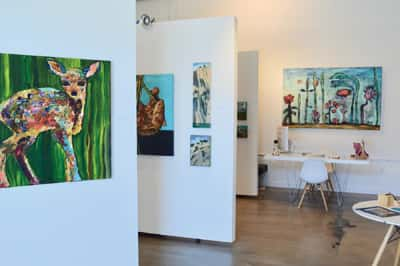 Hirshfield stayed at the gallery until 6 p.m. on Tuesday, Feb. 26. “It was raining hard, and it wasn’t that noticeable other than a little bit of water,” she recalls. After she left, the rain got heavier, but she didn’t see any signs she should go back to check the gallery. Then she received an email on Wednesday morning from management saying that The Barlow was flooding, and they were putting up barriers. She couldn’t get to Sebastopol from Santa Rosa until Thursday, and a neighbor informed her that the gallery had about an inch of rainwater inside. When she arrived at 10 a.m. and opened the doors, the water poured out.
Hirshfield stayed at the gallery until 6 p.m. on Tuesday, Feb. 26. “It was raining hard, and it wasn’t that noticeable other than a little bit of water,” she recalls. After she left, the rain got heavier, but she didn’t see any signs she should go back to check the gallery. Then she received an email on Wednesday morning from management saying that The Barlow was flooding, and they were putting up barriers. She couldn’t get to Sebastopol from Santa Rosa until Thursday, and a neighbor informed her that the gallery had about an inch of rainwater inside. When she arrived at 10 a.m. and opened the doors, the water poured out.
“Everybody was sweeping water out of their spaces,” she says. Some, but not all, was lost. Four wood panel paintings and one large drawing, as well as some electrical equipment were damaged. Her husband borrowed a truck, and they wrapped the remaining artwork and removed it so it wouldn’t be exposed to the moisture, and The Barlow management sent in a crew to clean the gallery and redo the walls. “Barney came in with all the right people and the right skills,” she says. They did the job quickly and thoroughly with a speed she found astonishing. “Three weeks later, I was back in,” she says. She reopened the same day as two other retailers, Lori Austin Gallery and Adelle Stoll, which sells accessories and leather goods. “We made a big hoopla about it.” As businesses began to reopen, they supported each other by posting the news. While the repairs were taking place, Reframe Hair Gallery hosted an art show for Hirshfield and several other artists, and owner Nevuah Tova gave free haircuts. Taylor Lane Organic Coffee provided free refreshments. By the beginning of summer, business was slowly returning. Hirshfield is still hoping for a continued increase in customers, but predicts The Barlow will fully recover, in time. “The Barlow was amazing. It will be amazing again.”
New directions
Not everyone decided to stay. Andrea Kenner, who offered high-end women’s clothing and accessories by emerging designers at her shop, Tamarind, felt forced to leave. She was an early tenant, opening her store in 2013, but for her, paying for repairs caused by the landlord’s negligence at The Barlow didn’t make sense. She was attempting to return from the east coast on Tuesday, Feb. 26, and was dealing with flight delays as a result of the rain, when she learned about the flood.
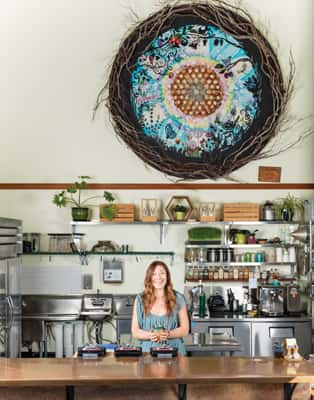 “No email struck a chord with me to panic. I thought everything was under control,” she says. She went to check on the store the next morning, and it was in the area where the water was the deepest. “When I saw what was going on, my heart just sank. I didn’t know how to process it,” she recalls.
“No email struck a chord with me to panic. I thought everything was under control,” she says. She went to check on the store the next morning, and it was in the area where the water was the deepest. “When I saw what was going on, my heart just sank. I didn’t know how to process it,” she recalls.
Paul Vyenielo, one of the six owners of Crooked Goat Brewing, which has since reopened, took her by kayak to retrieve a few items that were above the water line, but an hour later, the water had risen even further. Management at The Barlow offered to store a few items for her, but otherwise, she had little interaction with them and felt discouraged. “I love the community. I love the feel down there,” says Kenner. But the challenges were immense, and reopening was too difficult.
She had opened an annex store in Healdsburg two years earlier and decided to take advantage of the chance to move into a bigger store downtown on Healdsburg Ave. She also offers products online at ShopTamarind.com. “Our customers are finding us again. We’re settled; we’re stable.” she says. “I feel like we’re really at home now. This took us on a route that made us find where we’re supposed to be.”
Opportunities
Occasional downpours of winter rain are an inescapable fact of life in Northern California, and although the large volume of rain in February was unusual, it could happen again. Thus, one of the most important outcomes was the opportunity to re-examine the flood plan. For Parks, a big disappointment was in not finding out if the flood logs are effective.
“Until you’re faced with 20 feet of water, you don’t know if it’s going to work,” says Parks. Going forward, he would like the flood logs for Community Market to be stored on the site. In addition, he would like to have training so he could install them himself. He further suggests that if each building had logs, a tenant trained in installation and an annual test as a refresher, business owners would be able to take action themselves instead of waiting for outside workers to arrive in uncertain conditions.
Aldridge, meanwhile, has been researching new systems. “A lot of good things came out of the flood. We’ve increased our understanding of how we need to update the flood plan,” he says. After initially focusing on helping tenants reopen their businesses, The Barlow has shifted to examining ways to improve the plan, according to Aldridge. Most significantly, the company plans to monitor water levels on the Russian River, rather than the Laguna. The Barlow has more new ideas, as well. “We are considering other measures, such as a water bladder dam, but we are in the very early stages of working with our consultants to evaluate these alternatives,” says Aldridge. “With the modifications to the current plan to move up the trigger point, we have a lot of confidence.”
Aldridge’s initial efforts couldn’t help everyone stay, however. He reports that six tenants chose to leave The Barlow. But by the end of June, business was back on track with more than 30 tenants, and he expected to fill vacancies with new clients. “We’re back 100 percent from where we were and making some nice improvements,” he says. Among them are upgrades to tenants’ spaces, adding new businesses that meet the needs of the community and turning the former events center into a 600-seat indoor-outdoor live music venue.
The experience also developed a spirit of community that gave tenants the strength to move forward collectively as well as individually. “Our daily routine consisted of being part of a business community that had been washed away,” says Baiocchi, of The Nectary, who saw a need for the business owners to mobilize and support each other.
It took slightly more than two months for her store to reopen. During that time, she was also running a production kitchen at The Barlow, which escaped damage, and operating a shop in Healdsburg as well as a pop-up in Fern Bar, also in The Barlow. Despite overwhelming demands, she set up an online chat group so members could share information and arranged meetings for them to discuss issues. “Everyone was trying to understand the story and bring all our stories together into a tapestry,” she explains. Then, in May, she organized a big block party and one-day festival with three stages of music along with food and retail vendors. It served as a grand reopening of most of the businesses and filled the streets with happy people. “It was healing for the whole community and a reminder of who we are and why we’re here,” she says. The Barlow is once again beginning to flourish, and with lessons learned and the strength of its community, it’s embarking on a bright future.


